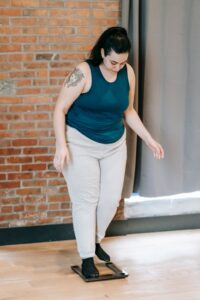Walking for Weight Loss: Benefits and Tips
Walking is one of the simplest and most accessible forms of exercise. Whether you’re looking to improve your overall health or aiming to shed a few pounds, walking can be an effective component of your fitness routine. This article explores the benefits of walking for weight loss, offers useful tips to maximize your walks, and provides a plan to help you get started.
The Benefits of Walking for Weight Loss
Walking offers a range of benefits for those seeking to lose weight or maintain a healthy lifestyle. Here are some key advantages:
1. Burns Calories
Walking is an excellent way to burn calories, which is essential for weight loss. The number of calories burned depends on your weight, walking speed, and duration. On average, a person weighing 155 pounds burns approximately 167 calories per 30 minutes of brisk walking at 4 mph.
2. Easy to Start and Stick With
Unlike more intensive workouts, walking requires no special equipment or gym membership. It can be done almost anywhere and at any time, making it an easy habit to integrate into daily life. This simplicity contributes to long-term adherence, which is crucial for sustainable weight loss.
3. Low Impact
Walking is a low-impact exercise, making it easier on the joints compared to running or high-intensity workouts. This makes it a suitable choice for individuals of all ages and fitness levels, including those with joint issues or those who are overweight.
4. Improves Mental Health
Regular walking can reduce anxiety and depression and enhance overall mood. Physical activity releases endorphins, the body’s natural mood lifters, which can help reduce stress and improve mental wellbeing.
5. Boosts Metabolism
Walking helps to increase metabolic rate by building lean muscle mass and improving circulation. A higher metabolism aids in burning calories more efficiently, even at rest.
Tips for Effective Walking Workouts
To ensure that your walking routine is as effective as possible for weight loss, consider the following tips:
1. Set a Pace
For effective calorie burning, aim for a brisk pace. This generally means walking at a speed of 3.5 to 4 mph, where talking becomes somewhat challenging. Using a fitness tracker can help monitor your pace and ensure you’re walking fast enough to achieve your fitness goals.
2. Choose the Right Footwear
Invest in a good pair of walking shoes that provide adequate support and cushioning. Proper footwear can prevent injuries and increase comfort, allowing you to walk longer distances.
3. Incorporate Interval Training
To increase calorie burn, incorporate intervals into your walking routine. Alternate between periods of brisk walking and slower-paced walking. For example, walk briskly for 3 minutes, then slow down for 1 minute. Repeat this cycle throughout your walk.
4. Use Proper Form
Maintain good posture by standing tall, keeping your shoulders back and relaxed, and engaging your core. Swing your arms naturally to enhance the workout and engage more muscles.
5. Stay Hydrated
Hydration is crucial, especially on longer walks or in warmer weather. Carry a water bottle with you and take small sips throughout your walk to stay hydrated.
6. Track Your Progress
Keep track of your walks using a fitness app or pedometer. Monitoring your progress can provide motivation and help you set and achieve new goals.
Creating a Walking Plan for Weight Loss
Consistency is key when it comes to weight loss through walking. Here’s a sample plan to help you get started:
Week 1-2: Build a Habit
Begin by walking 15-20 minutes a day at a comfortable pace. Focus on establishing a routine by walking 5 days a week.
Week 3-4: Increase Intensity
Gradually increase your walking time to 30 minutes per session. Introduce brisk walking intervals to challenge yourself and boost calorie burn.
Week 5-6: Extend Duration
Aim for 45-minute walks, maintaining a brisk pace. Consider adding a hill or incline to your route to engage more muscles and increase intensity.
Week 7-8: Diversify Your Workout
Incorporate additional exercises such as bodyweight squats, lunges, or push-ups during your walks. This will enhance overall fitness and muscle tone.
Conclusion
Walking is a powerful tool for weight loss and overall health improvement. Its accessibility, combined with the numerous physical and mental benefits, makes it a go-to exercise for many. By following the tips and plan outlined in this article, you can make walking a part of your daily routine and achieve sustainable weight loss results. Lace up your sneakers and start your walking journey today!
For more tips on healthy living and weight loss, visit our blog and join our community of fitness enthusiasts.













